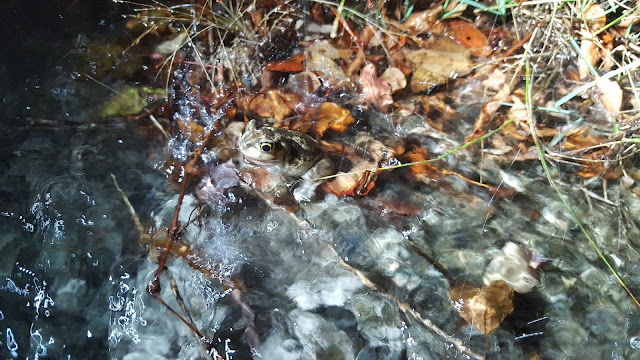The wood turtle is a species of special concern in Massachusetts. This time of year, mid April, they are active underwater in stream habitats where they overwinter. When the weather gets a bit warmer the turtles will come and go from the streams to forage the forest for food or to look for a suitable nesting location.
In previous years at this site 7 female turtles were caught, measured, and fitted with radio transmitters, each tuned to its own frequency on a specific bandwidth that can be picked up by a radio receiver with a directional antenna.
Julie and I walked up and down the stream for several hours listening to the radio to pinpoint the exact location of each of the turtles while at the same time see if we could locate new individual turtles in this population.
We were able to find and catch a few turtles that did not have radio transmitters that were identified in previous seasons as well as a few new young individuals that had not been previously identified.
When a new turtle is captured biologist will 'notch' the outer shell with a triangular file and makes a unique code by using the scutes (plates along the edge of the shell) to create a unique ID code that can be used to easily identify an individual turtle at any point in the future. The notch does not harm the turtles and is akin to filing your fingernails. Along with the notch a datasheet is filled out to collect and record data on the age, sex, size, weight, and habitat location data for each encounter.
 |
| Radio receiver with antenna, wood turtle with radio attached to its shell with epoxy. |
 |
| Wood turtle hiding in its shell. |
 |
| Julie getting ready to record data and catalog an adult male wood turtle before releasing it back in the stream where it was found. |


































